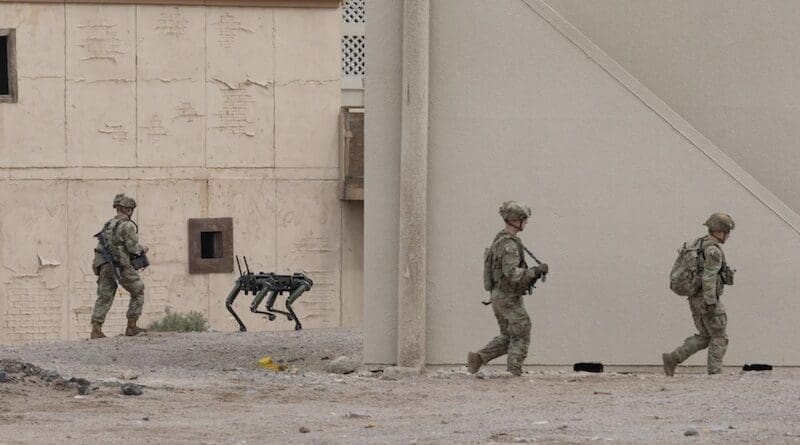Matthew Olay

The Army is moving toward a future where soldier formations will be more efficient and lethal thanks to the integration of advanced technology both on the ground and in the air, according to the service’s chief of staff.
Army Gen. Randy George discussed some of the advancements this morning when talking with Defense One digital media platform in Washington.
“We’ve all seen how the battlefield is changing, [and] we know that you can’t have these big C2 [command and control] nodes that are out there,” George said. “We know that machines can do a lot of things right now much more effectively and much cheaper, and we’re going to have to incorporate them into our formations.”
George spoke to Defense One after having just returned from observing Project Convergence Capstone 4, an experiment involving the Army, Navy, Air Force, Marines and Space Force. Dubbed PC-C4, the two-phase, joint and multination experiment took place at Camp Pendleton, California, and the Army’s National Training Center in Fort Irwin, California, from Feb. 23 through March 20.
Led by Army Futures Command, Project Convergence is a series of experiments that gives warfighters the opportunity to experiment with technology at the operational level and further refine methods for synchronizing as a joint force.
“Technology is moving really fast,” said George, “and [PC-C4] kind of gave us an opportunity to see just how we could do that.”
As an example of how advanced technology can be integrated into the Army’s formations, George explained that he got to observe a light infantry company that was operating in a simulated urban environment while incorporating robotic dogs and unmanned aircraft systems to sense the environment.
“That was all tied together by a very simple command and control network that was easy to use and intuitive,” said George. “It was amazing.”
George said that the hands-on approach to innovation during experiments like PC-C4 can be very advantageous when compared to more conventional, top-down innovation.
“I think there’s nothing like testing … in the environments that you know you’re going to need to operate in; this isn’t about testing something in a showroom,” remarked the general. “This is actually getting to use [the technology] where they’re going to use it … and I think that’s where we do our best learning.”
In terms of a timeline for integration of modernization capabilities, George said that depends on future budgets, and while there is no specific date or timeline for all modernization, the Army is focused on “incremental improvement.”
“We do have a sense of urgency,” he said. “I think everybody is anxious to transform.”
No comments:
Post a Comment